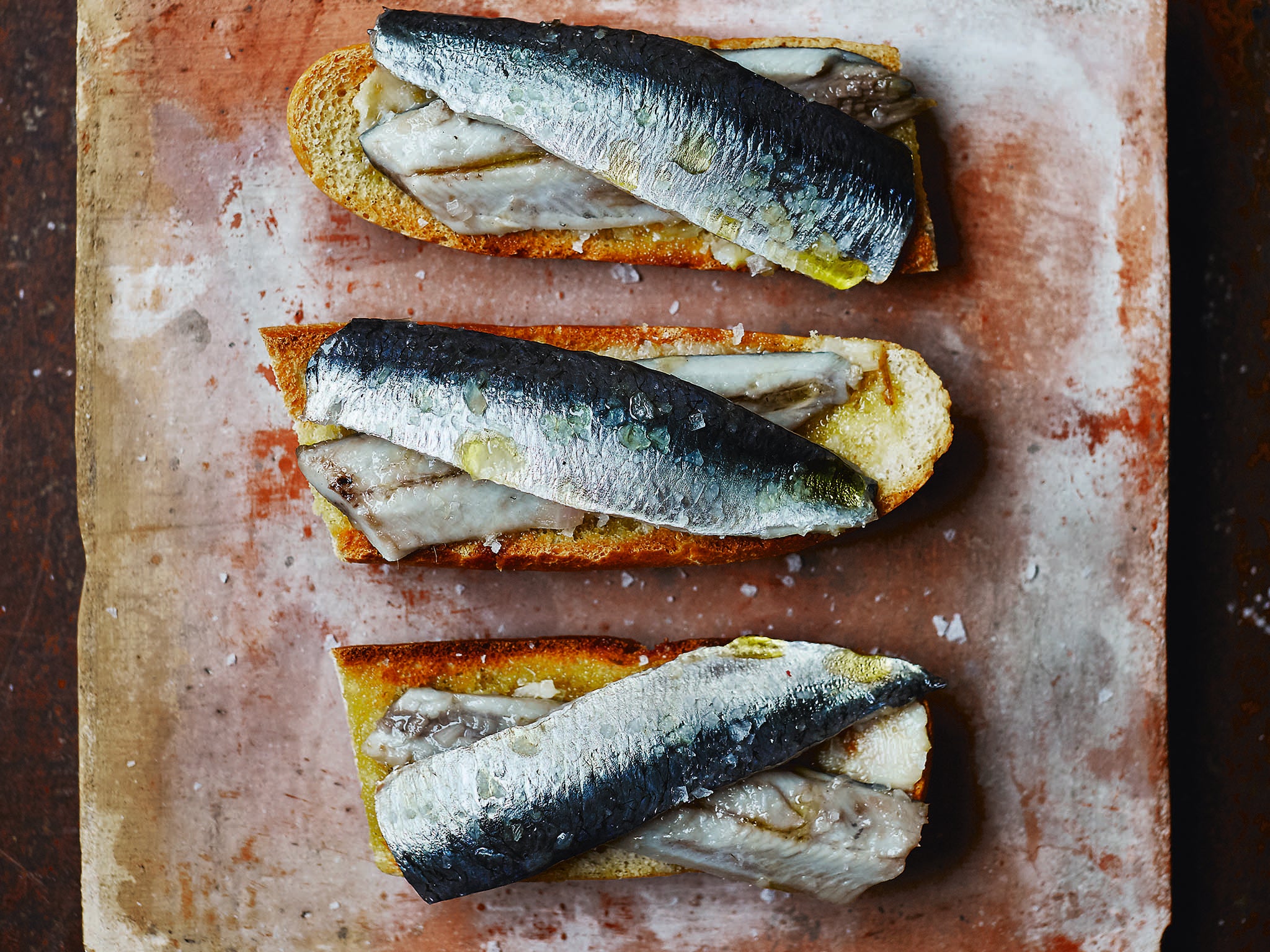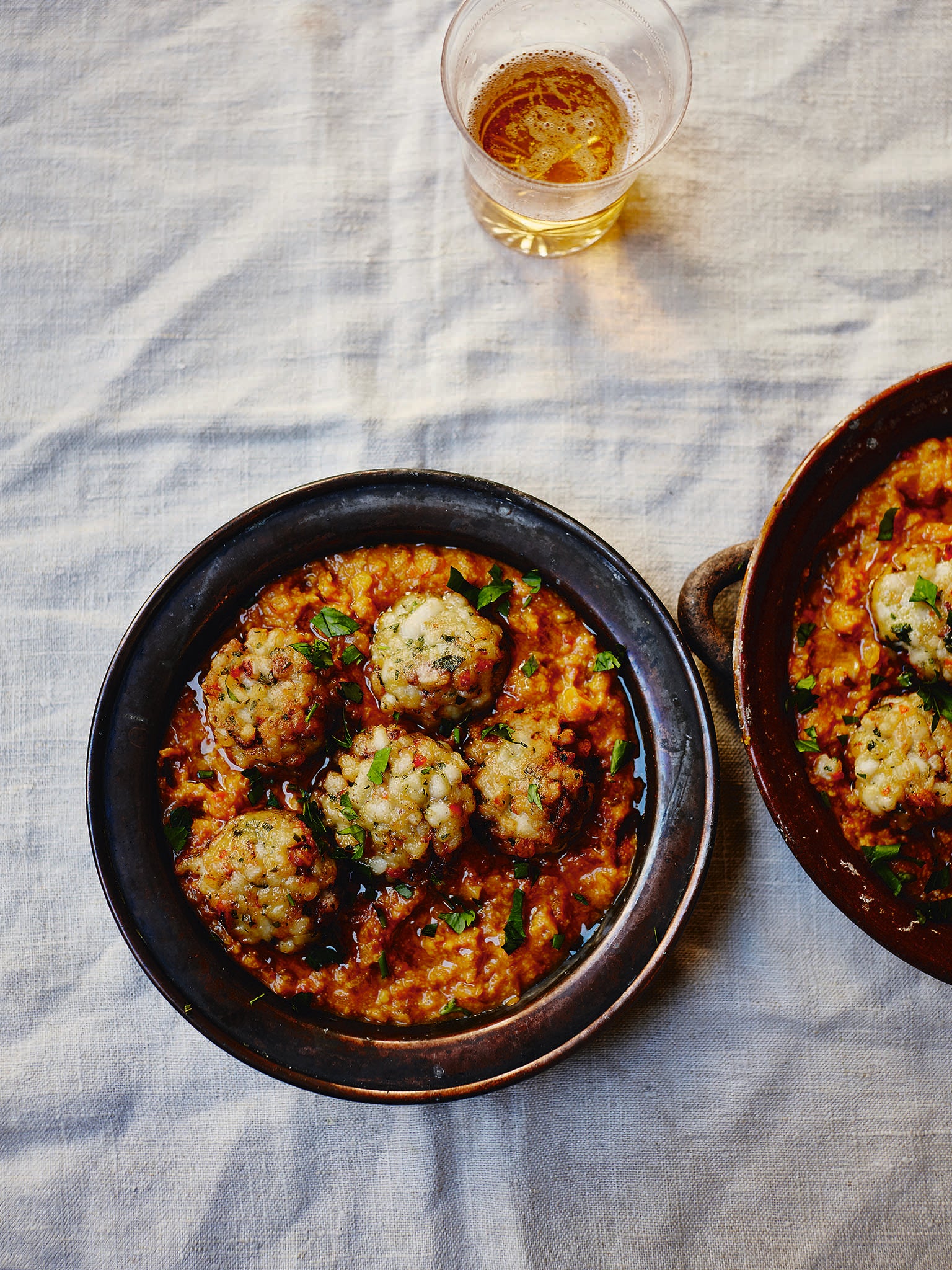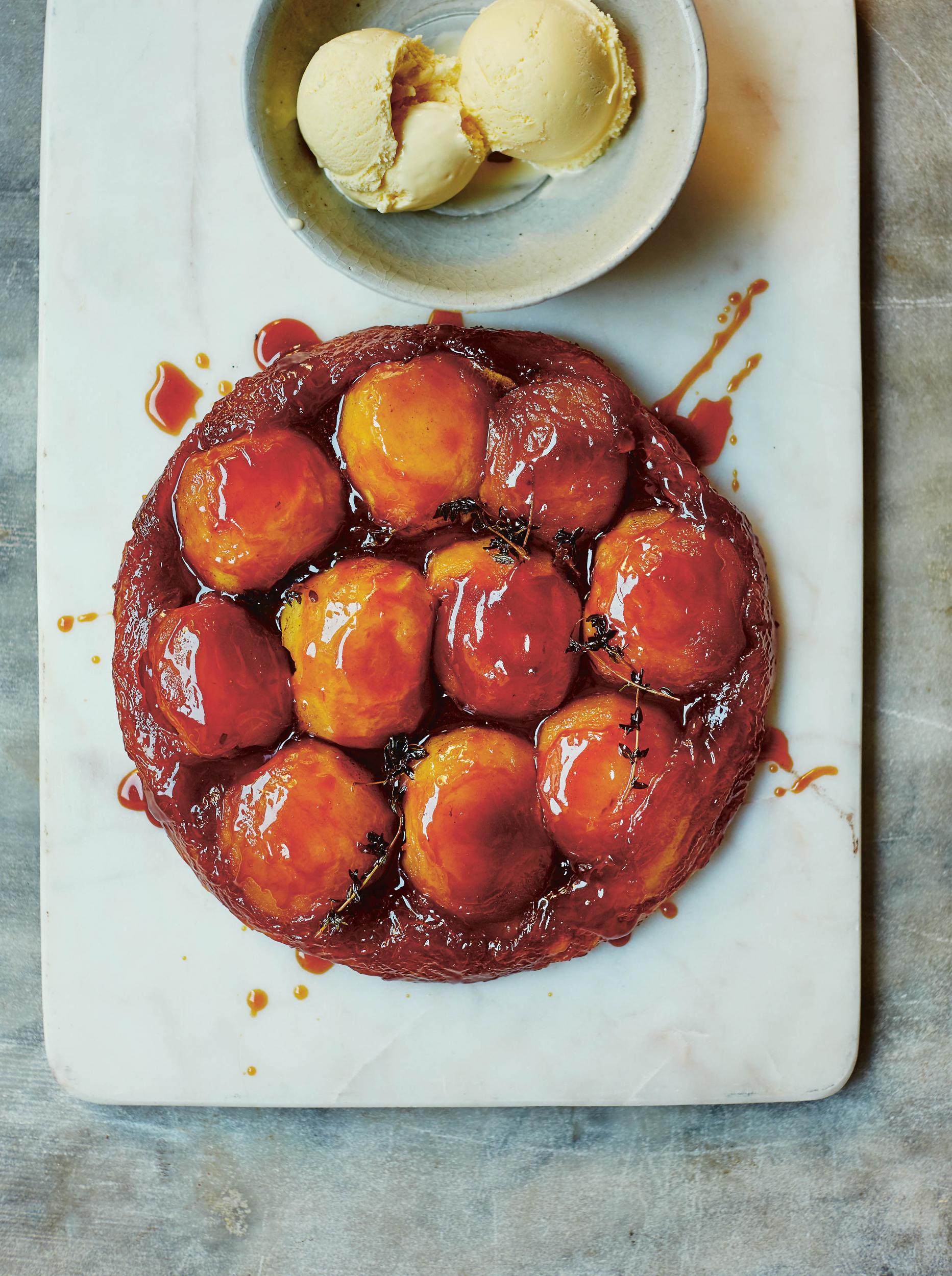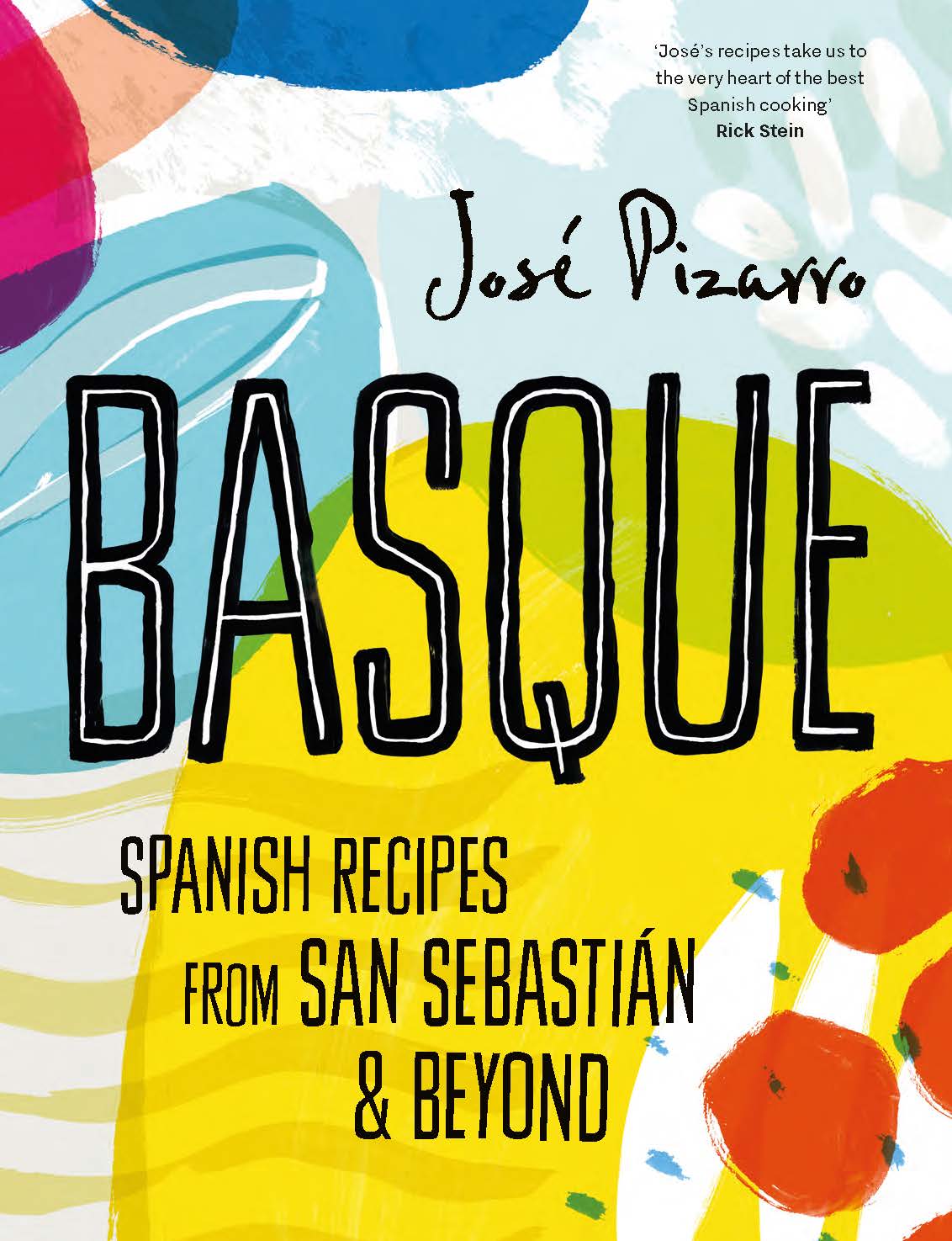Recipes from the Basque country from squid meatballs to salted honey ice cream
Dedicated to the Basque country, the book of the same name showcases sumtious summer plates

Spanish Chef Jose Pizarro's book reflects the big sharing plates that fill family tables along with the bite-size portions know as pintxos, which is the Basque country's own style of tapas. Here are some of our favourite dishes to try.
Sardines marinated in cider or Txakoli vinegar
My love of sardines goes back as far as I can remember. My mum used to come home from the market every Tuesday with sardines in her bag. That strong fresh fish flavour will stay with me forever, as will a glass of fresh milk straight from the cow. The simplest way to prepare sardines is to remove the scales, fillet them, then eat them raw. I wanted to give some extra flavour to this dish, as not many people will eat them raw. This marinade is very quick, which means you will keep almost all of the flavour as well as the freshness of the fish.
Serves 4
1 bulb garlic
olive oil
500 ml (17 fl oz) Txakoli or cider vinegar
1 small French shallot, finely chopped
5 black peppercorns
5 pink peppercorns
1 bay leaf
few sprigs of tarragon
25 g (1 oz) caster (superfine) sugar
8 super-fresh sardines, filleted
toasted baguette to serve
extra-virgin olive oil to drizzle
flaky sea salt
Preheat the oven to 170°C (340°F/Gas 3).
Drizzle the garlic with oil and roast for 30–40 minutes until really tender. Squeeze the pulp from the skins and mash into a paste. Set aside. Gently heat the vinegar with the shallot, peppercorns, herbs and sugar until the sugar has dissolved, but not until it boils. Lay the sardines skin side down in a dish and pour over the hot vinegar. Leave for a couple of minutes, then drain.
Spread the toasted baguette with some of the garlic paste. Top with the marinated sardines, drizzle with extra-virgin olive oil and sprinkle with the flaky sea salt.
Squid meatballs with saffron & almond sauce

I took inspiration for this recipe from the traditional albóndigas that you’ll always see in tapas bars and from the Ibérico pork meatballs that we serve with a cuttlefish sauce at my restaurants – but I have made the squid the star here. The most important thing to remember when serving squid or cuttlefish is to cook it either very quickly or very slowly, otherwise it becomes tough and chewy. For this recipe, I’ve cooked it quickly, to ensure it’s really tender.
Serves 4
600 g (1 lb 5 oz) fresh squid, cleaned
1 red chilli, finely chopped
1 garlic clove, finely chopped
50–75 g (2–2 ½ oz) dry breadcrumbs
handful of coriander (cilantro), finely chopped
1 free-range egg
sea salt and white pepper
plain (all-purpose) flour for dusting
olive oil for frying
chopped parsley for garnish
for the sauce
2 tablespoons olive oil
1 banana shallot (echalion), finely chopped
1 small onion, finely chopped
1 garlic clove, crushed
5–6 ripe tomatoes, skins and seeds removed
750 ml (25 fl oz) fresh fish stock
good pinch of saffron
50 g (2 oz) ground almonds
sea salt and freshly ground black pepper
Finely chop the squid and mix with the chilli, garlic, breadcrumbs, coriander and egg. Season well with the sea salt and white pepper. Lightly oil your hands and roll the mixture into small balls, about 30 g (1 oz) each. Chill in the fridge while you make the sauce.
Heat the oil in a pan and gently fry the shallot and onion for 10 minutes until lovely and soft. Add the garlic and cook for a minute more, then add the tomatoes and stock and simmer for 20 minutes to reduce to a thick sauce. Soak the saffron in 2 tablespoons hot water for a few minutes, then mix with the ground almonds to form a paste and add to the pan with plenty of seasoning. Simmer for 5 minutes to thicken. Set aside.
Dust the squid in flour. Heat a good amount of oil in a non-stick pan and fry the squid for 2–3 minutes, turning until golden brown. Drain on paper towels. Add the squid meatballs to the sauce and heat through gently, then scatter with parsley and serve.
Apple tatin with salted honey ice cream

You may ask why a famous French dessert is in a book about Basque cuisine. Well, there are two main reasons for this. Firstly, the Basque region has an abundance of delicious apples and secondly, I just love this recipe. What more can I say?
Serves 6
200 g (7 oz) caster (superfine) sugar
50 g (2 oz) unsalted butter
few sprigs of lemon thyme
5–6 dessert apples, peeled, cored and halved
500 g (1 lb 2 oz) all-butter puff pastry
plain (all-purpose) flour to dust
for the ice cream
600 ml (20 fl oz) full-fat (whole) milk
50 g (2 oz) caster (superfine) sugar
190 g (6½ oz) runny honey
6 free-range egg yolks
1 teaspoon flaky sea salt
500 ml (17 fl oz) double (heavy) cream
To make the ice cream, heat the milk with the sugar until almost boiling. Beat the honey, egg yolks and salt together in a bowl until light and fluffy. Pour the hot milk over the egg mixture, stirring until smooth. Pour the mixture back into a clean pan and put over a mediumlow heat and cook, stirring constantly, until you have a thick, smooth custard. Pour into a bowl and, when cold, stir in the cream. Pour into an ice-cream maker and churn until set, then scoop into a container and freeze until ready to serve.
For the tatin, pour the sugar into a heavy-based ovenproof frying pan with a 20 cm (8 in) diameter base and add a couple of tablespoons of water. Stir to mix, then place over a low heat and cook very gently, stirring, until the sugar has dissolved.
Stop stirring, increase the heat to high and bubble until you have a dark golden caramel. Add the butter, stirring quickly until smooth, then put the apples, cut side up, into the pan, with the thyme. Return to a low heat and cook for 10 minutes, then set aside to cool completely.
Preheat the oven to 200°C (400°F/Gas 6). Roll the pastry out on a lightly floured surface and cut a round a bit bigger than the pan. Tuck the pastry over the top of the apples so it sits snuggly round the side of the pan.

Bake for 25–30 minutes until the pastry is golden. Leave to stand for 10 minutes before turning out onto a plate and serving with the salted honey ice cream.
Tip: If you don’t have an ice-cream maker, pour the mixture into a deep plastic container and freeze for 2 hours, then beat with an electric hand whisk to break up the crystals and freeze for a further hour. Repeat twice, then freeze until solid.
BASQUE: Spanish Recipes from San Sebastián and beyond by José Pizarro (Hardie Grant, £25.00) Photography: Laura Edwards
Join our commenting forum
Join thought-provoking conversations, follow other Independent readers and see their replies
Comments